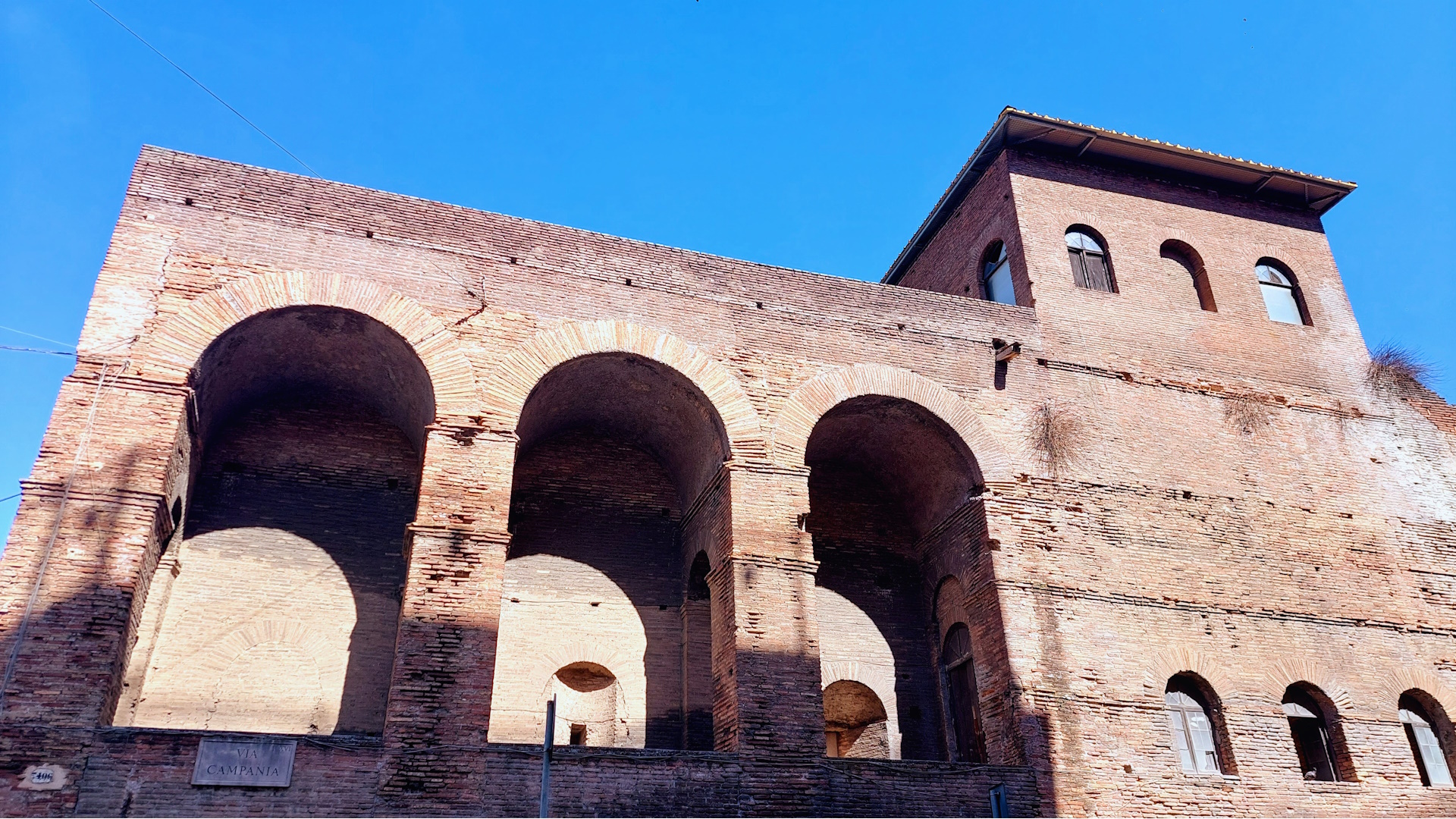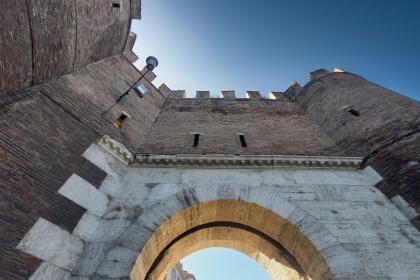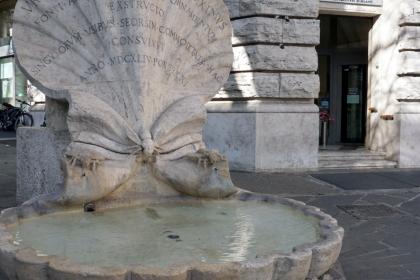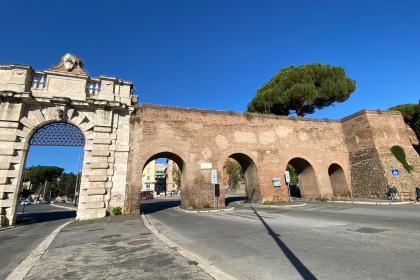
One of the longest and best-preserved city walls in the world, the Aurelian Walls were erected by Emperor Aurelian between 271 and 275, to protect the heart of the Eternal City from the barbarian populations coming from northern Europe.
Amidst damage, demolitions and subsequent restorations, since then, this grandiose monumental and architectural complex tells the millennial history of Rome as a protagonist and witness to the changes and transformations of the city.
In the 17th century, in fact, the walls, in addition to their original defensive function, took on the role of an evocative scenic backdrop to one of the main avenues bordering the magnificent villa of the Ludovisi family, with the restoration of the section attached to it and the creation of a new façade of one of the towers of Porta Pinciana. The walls were also embellished by the creation of an oval niche in which was placed the colossal bust of a young soldier, probably the Byzantine general Belisarius, inspired by the figure of Alexander the Great.
In the 19th century, the only building still standing, following the sale of the property by the Ludovisi family was, and still is, the Casino dell'Aurora, an elegant little palace, occasionally open to visitors, housing prestigious art collections and frescoes by great artists such as Caravaggio, Guercino, Domenichino and Paul Bril.
In 1847, Pope Pius IX donated the monument to the Capitoline Council and, after the proclamation of Rome as capital of the Kingdom of Italy on 20 September 1870, the walls, which by then had lost their defensive function, were partly demolished and fragmented to allow the opening of some pedestrian and vehicular passages between the Historic Centre and the new neighbourhoods announced by the 1883 Regulatory Plan.
The area was then subdivided and rapidly built over, and the walls severely damaged. The monument, until then still intact and with all walkways practicable, completely changed its physiognomy: originally, in fact, the overall circuit ran for 18.837 kilometres, while today the length is around twelve.
The story of the walls, however, in continuous transformation and evolution, saw, between the end of the 19th and the beginning of the 20th century, a new beginning when the city council decided to entrust the towers and walkways to a number of artists who made them their ateliers and homes. That is how one of Rome's symbolic monuments, a trait d'union between the events of the ancient city and those of the modern metropolis, saw Giacomo Balla, Filippo Tommaso Marinetti, Ettore Ximenes, Ettore Ferrari, author of the monument to Giordano Bruno in Campo de' Fiori, and other artists who have made the history of the Capitoline culture and beyond, gather inside its walls.
Among these was the ceramist Francesco Randone who, in Tower XXXIX in Via Campania, opened in 1890 a ‘free school for girls and boys from six to fifteen years of age, without distinction of class, religion or culture’: the Scuola d'Arte Educatrice, still in operation today.
In January 1974, however, the walls and door were the stars of a spectacular land art intervention by Christo and Jeanne-Claude de Guillebon, who wrapped both sides with nylon sheets and orange ropes in one of their famous ‘wrap-ups’.
Thanks to the ever lively interest in this grandiose protagonist of Rome's history, the stretch of wall from Porta Pinciana to Via Marche, with two orders of arches dating back to the time of Emperor Honorius (401-403 A.D.), was opened to the public on 3 July 2021 and can now be visited according to the calendar that specifies the access and booking procedures for the Monuments of the Territory.
The itinerary allows visitors to enjoy astonishing views as far as the eye can see over the Rione Ludovisi, the magnificent Villa Borghese and the beauties it contains, Villa Medici and Via Veneto, the undisputed protagonist of the Dolce Vita years.
The opening to the public of this portion of the Aurelian Walls, together with the stretch of Viale Pretoriano, between Via dei Frentani and Via dei Ramni, is only the first stage in a process of enhancing the entire circuit to make the approximately six kilometres of the patrol walkway, which is still preserved, viable.
Photo turismoroma
Porta Pinciana

 Condividi
Condividi
Rione XVI - Ludovisi

The Aurelian Walls

 Condividi
Condividi
Information
Admission to the monument is allowed to groups and associations, with their own guide, who must make a reservation at 060608 (daily, 9.00 - 19.00).Maximum 10 people per visit.For individual visitors, who must also make a reservation at 060608, individual visits are also possible according to a schedule specified on the page >Monumenti del territorioNot accessible to the disabled
 Condividi
Condividi
Locations
To find out about all accessibility services, visit the Rome accessible section.











































